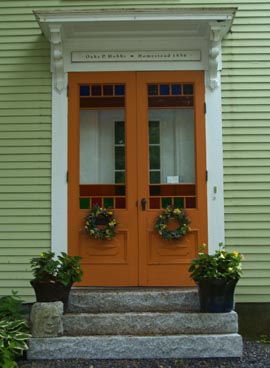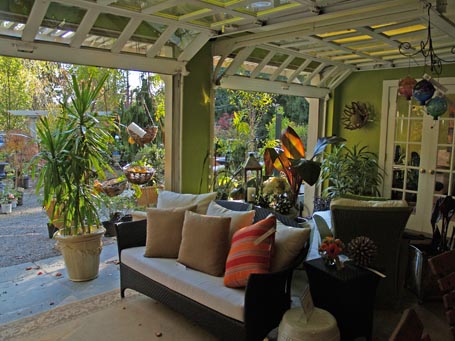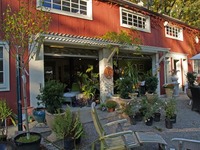 The color combination of orange doors trimmed in white within pale, green, exterior walls drew me eye to this tableau. (See House Enthusiast logo/button colors.) Three granite risers and an elegantly bracketed door visor set off the striking doors, which feature square and rectangular panes of colored glass bordering clear lites. Bottom wooden panels, picture-framed by moldings and featuring applied panels with diamond-shaped accents, further render these doors unique.
The color combination of orange doors trimmed in white within pale, green, exterior walls drew me eye to this tableau. (See House Enthusiast logo/button colors.) Three granite risers and an elegantly bracketed door visor set off the striking doors, which feature square and rectangular panes of colored glass bordering clear lites. Bottom wooden panels, picture-framed by moldings and featuring applied panels with diamond-shaped accents, further render these doors unique.
Though they may have once functioned as primary entry doors, they now appear to be acting as storm doors or secondary doors. Today, immediately inside them, a newer, single, French door sits in what is presumably an insulated wall. This is a very clever way to preserve an antique entry while simultaneously reducing air infiltration. It’s win-win; such a solution retains architectural character and improves energy efficiency. If you’re renovating an older home, keep an approach like this in mind in lieu of replacing unique, antique doors with contemporary alternatives.
by Katie Hutchison for House Enthusiast






